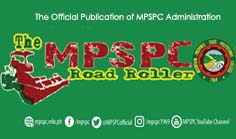THE TEACHING OF FILIPINO AT MOUNTAIN PROVINCE STATE POLYTECHNIC COLLEGE
Estrella A. Basco
INTRODUCTION
Educational goals and objectives are being re-directed as needed to meet the demands of the times and to keep with the latest development thrusts in education. Along President Benigno Simeon Aquino’s Philippine Development Plan 2011-2016, the country is exerting all efforts to attain its targets under the Millennium Development Goals to improve quality, access to and efficiency of education, for education has been identified as the central strategy for investing in people, reducing poverty, and building national competitiveness.
In achieving any development plan or thrust, the role of language cannot be underestimated. It is very evident that language serves many general purposes in human activity. Man uses language to develop himself and help others develop themselves. Through language he receives and transmits the great ideals of his civilization and those of other people. Therefore, the fulfillment of man’s aims and aspirations as an individual and of his role in his immediate and wider community depends greatly upon his ability to communicate. A man’s communicative competence, which is essentially rooted in his thoughts, feelings, and actions, is the by-product of a dynamic process interlocked with his direct experiences. Indeed, man’s development in and mastery of language, as exemplified in his proficiency in listening, speaking, reading, and writing effectively, are his most important accomplishments and equipment for self-actualization (Bernardino and Abella, 1966). With the very important role played by Filipino, as a national language, lingua franca in many urban communities, and a medium of instruction in all levels of education in both public and private schools in the Philippines, instructors teaching Filipino must be competent in handling its language subject components because they are the tools in understanding, analyzing, and evaluating other reading materials for other disciplines, especially if they are written and taught in Filipino.
Filipino is generally understood by educators, teachers, and students as a subject which includes the macroskills of listening, speaking, reading, and writing; and the medium of instruction for some content subjects in the elementary and secondary schools such as the Social Studies, Music, Arts, Physical Education, Character or Values Education, and Home Economics and Livelihood Education. Its great importance rests on the fact that it constitutes the most important medium of communication in the country, but it remains saddening to observe that it is regarded as the second most important medium of communication in the school curriculum. English is still considered by many educators, teachers, students, leaders and employers as the most essential subject in the school program.
The above observation is based from the fact that English occupies the greatest amount of time in the class program of every public school especially of tertiary education courses. The special reason for this is that the learners are learning and are being educated in a foreign language, the mastery of which conditions to a large degree their success in school work. This common notion is further proven by most parents who give a high regard for the importance of English overshadowing Filipino, to the extent of evaluating the educational growth of their children on the basis of the latter’s ability to understand, read, speak, and write in English. But whether in English or not, the language arts deserve a significant place in the curriculum, both for their practical value and their usefulness as a tool for learning.
Mountain Province State Polytechnic College (MPSPC) is one of the higher education institutions that is trying to comply to the CHED memorandum. This institution is found in Mountain Province of the Cordillera Administrative Region. Most of the students at Tadian Campus speak Kankanaey while at Bontoc Campus, Bontoc, with different variations. There are few enrollees from Ilocos Sur, Nueva Vizcaya, Isabela and other farther lowland provinces who speak Ilocano; a few from Kalinga, Ifugao, and Benguet. They all use their respective first language and Ilocano, being the lingua franca in the region, in their day to day interactions at home or in their boarding houses, in the community and in the school. It is observed that in the order of frequency, from the most to the least, Kankanaey followed by Ilocano, then Filipino, then English are used by the students in conversing with their instructors and vice versa, outside the classrooms. In the classrooms, when the faculty or students run out of English terms, they switch to Filipino during discussions of lessons taught in English. When some students who are not Tagalog speakers speak in Filipino with their peers outside the classrooms, just like speaking in English occasionally, they are teased or criticized. This nature of the learners along other factors like the competence of Filipino teachers, use of teaching strategies and techniques, evaluation tools used in assessing student’s learning and problems encountered affect the teaching of Filipino.





















